MASHPEE — Nitana Greendeer of the Mashpee Wampanoag Tribe knows that children are the key to preserving the Wôpanâak language. “When you haven’t got 20, 30, 40 years of English grammar embedded in your brain,” she said last week, “it’s a lot easier to make room for other ideas of how language can work.”
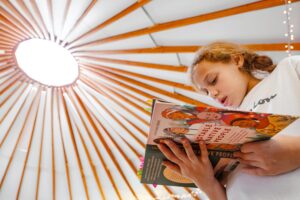
But Greendeer, the head of the Weetumuw School, where Wampanoag children ages three to nine learn the language, is worried because she is struggling to raise sufficient funds for the year ahead.
According to Greendeer, it costs about $625,000 to run the Weetumuw School for a year. But going into 2025, she expects to have only $400,000. There are 18 students currently enrolled at the school, which Greendeer said can accommodate 24.
The funding shortfall is largely the result of a loss of federal dollars reflecting a change in the way the school teaches the language. “Previously, we were applying for a lot of federal language immersion funding,” Greendeer said. “But because we don’t have as many fluent speakers who are teachers, language immersion isn’t as relevant anymore.”
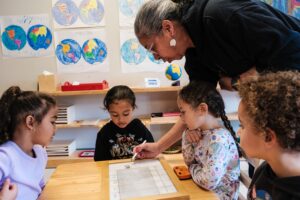
When it first began, Greendeer said, the Weetumuw School’s primary goal was to teach students the Wôpanâak language in a full immersion program. Now, however, it’s more focused on culture-based education, with students regularly using English as well as Wôpanâak.
Weetumuw employs a student-directed approach modeled on Montessori pedagogy, which encourages children to develop their own strengths and interests. “The Montessori style is pretty complementary to what our experience has been as part of the Wampanoag community,” Greendeer said. “It’s very experiential learning, similar to how our traditional teachings are passed down.”
Traditional Wampanoag values certainly weren’t obtained through standardized book learning, Greendeer said — it was the Europeans who first developed a written version of the Wôpanâak language.
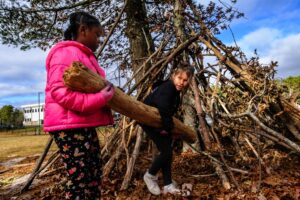
In the school’s two classrooms — one for students ages three to six, the other for students six to nine — children explore maps of the world, play with tools designed to teach mathematical concepts, and weave tobacco pouches using leather and sinew. Older students often play “Around the World,” a game that rewards them for shouting the correct Wôpanâak word for an image shown by their teacher.
Teachers and students at the Weetumuw School use Wôpanâak throughout the day, from simple phrases like nuhkees (“yes”) and mata (“no”) to formal greetings like kuweeqâhsun (“you are in the light”). Lead teacher Tia Pocknett sends daily social media posts containing miniature Wôpanâak language lessons to the families of her students. They’re designed so that parents and kids can learn together.
“I picture myself sometime in the future saying a Wôpanâak phrase in the wrong linguistic form and being corrected by one of my former students,” Pocknett said. “And that’s OK. I’m trying to be open to the idea of my language journey being fluid.”
Pocknett said that, while her students recognize the cultural importance of carrying on their language, they don’t feel overwhelmed by their task. “I feel like I would have had an immense amount of anxiety at that age,” she said. “But for them, they’re just like, ‘Yeah, cool, that’s our job.’ ”
A Language Reclaimed
The language spoken by the Mashpee Wampanoag Tribe was for a long time thought to have been lost in the mid-19th century. But the language was brought out of dormancy beginning in 1993 thanks to the efforts of Mashpee Wampanoag Tribe member Jessie Little Doe Baird, whose vision and research led to the Wôpanâak Language Reclamation Project. Baird taught Greendeer Wôpanâak in 2003.
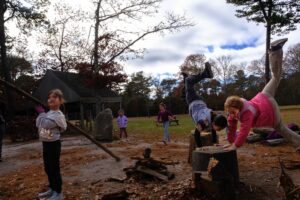
After the European colonists arrived in Massachusetts in the early 17th century, the Wampanoag people began building a corpus of legal documents and property deeds in Wôpanâak in order to protect themselves and their rights. It was the largest body of written documents in a native language on the continent, according to the reclamation project. But despite countless petitions, documents, and letters to Boston politicians, many Wampanoag people found themselves sold into slavery, their land taken, and their children sent away to boarding schools to become indoctrinated in European culture.
One of the most notorious of these boarding schools, the Carlisle Indian Industrial School in Pennsylvania, housed members of the Mashpee Wampanoag Tribe as recently as 1911. At the school, Indigenous children from across the country were forced to speak English, dress in European-style clothing, and abandon their cultural values. Physical and sexual abuse at the school were common, according to a report released in 2022 by the U.S. Dept. of the Interior.
Baird used the tribe’s collection of documents to compile a Wôpanâak dictionary in 1996 with the cooperation of MIT linguistics professor Ken Hale.
Three years earlier, Baird had the same dream three nights in a row: she saw a circle of faces repeating a phrase in an unfamiliar language, which she eventually realized was Wôpanâak. Baird said that the speakers in her dream told her to ask the Wampanoag people if they wanted to welcome the language home. “Nobody said no,” she said.
“I think it’s our responsibility to leave our children possibilities,” Baird said in the 2011 documentary We Still Live Here: Âs Nutayuneân, directed by Anne Makepeace. The film chronicles her work to bring the Wôpanâak language home. “It doesn’t mean they have to act on them, but we shouldn’t shut them down.”
Learning as a People
The Weetumuw School is not the only place where Wôpanâak learning has happened since the reclamation project got underway. But those other learning opportunities are limited.
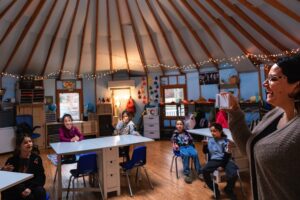
The Mashpee Middle-High School offered its first Wôpanâak language class in 2018. Six students, all members of the tribe, enrolled in the class, which was taught by Assonet Wampanoag Melanie Roderick. Roderick had learned the language from Baird in 2009.
Baird and Roderick also helped develop the website Kun8seeh.com (pronounced ku-noo-seeh, meaning “talk to me”) in 2020 with Mashpee Wampanoag Tribe member Tracy Kelley. The site, which can be accessed only by Wampanoag tribal citizens and their families, offers an online community where Wôpanâak learners can practice the language and speak with each other over long distances.
In 2021, 7th-graders at Mashpee Middle-High School got an opportunity to learn basic Wôpanâak as part of the school’s language exploration program, which also exposed them to basic French, Spanish, and Mandarin Chinese.
But recent years have seen a decrease in the availability of Wôpanâak language programs at Mashpee schools. Greendeer said that’s because the Wôpanâak Language Reclamation Project is focusing on making sure that any Wampanoag person who wants to learn the language can do it before it becomes available to outsiders.
Part of the reason for that, Greendeer said, is fear of appropriation. “There are so many things over the centuries that have been taken from our people,” she said. “Now that we have the language back, we don’t want to let that happen again.”
The Search for Support
Without the ability to carry out an immersion program, and therefore without the federal funds that would support that teaching approach, Greendeer said, the school has turned to fundraising from private foundations and donors. The Weetumuw School’s biggest funder, she said, is the Better Way Foundation, a Minneapolis-based nonprofit that supports early childhood education. Other donors include the Gruben Charitable Foundation, the Bilezikian Family Foundation, the Island Foundation, and the Cape Cod Foundation.

Greendeer said that the Mashpee Wampanoag Tribe provides some additional funding for the school, but money the tribe gets from the federal government is usually grant funding, so it’s earmarked for specific purposes, not necessarily for language education.
“The tribe has funded us even beyond what they were comfortable with at some points,” Greendeer said. “They’re committed to making sure the school remains open and remains a resource for families, but we’re getting to a point where the tribe is really concerned.”
“I think we’ll get there,” she said, “but I don’t know how.”



